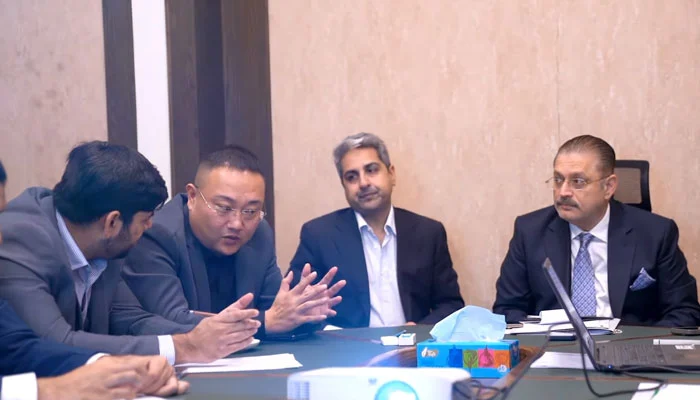The Karachi Circular Railway (KCR), a long-awaited public transit initiative poised to revolutionize the city’s transportation infrastructure, has once again been placed at the forefront of Sindh’s development priorities. Senior Minister for Transport, Sharjeel Inam Memon, has firmly reiterated the Sindh Government’s commitment to completing the KCR project on a fast-track and priority basis, ensuring that it evolves into a state-of-the-art urban mobility solution for the people of Karachi.
In a recent high-level meeting held at the provincial capital, the minister warmly welcomed the role of the Senate Committee for Railways, appreciating its proactive involvement and constructive recommendations for ensuring the timely execution of this critical infrastructure project. According to Sharjeel Inam Memon, the suggestions put forth by the committee reflect a sincere and collaborative approach toward overcoming the longstanding hurdles that have hampered progress.
Highlighting the importance of international collaboration, Memon confirmed that the Sindh Government is in active contact with several global development partners, most notably the Asian Development Bank (ADB), to arrange the necessary financial and technical support for KCR. He emphasized that these consultations are part of a broader strategic vision aimed at leveraging international best practices and funding models to bring Karachi’s transit network on par with global metropolitan standards.
With urban congestion reaching alarming levels and the city’s aging transport infrastructure stretched beyond capacity, the revival of the KCR is seen as a pivotal step in easing commuter burdens, reducing travel time, and promoting sustainable urban development. The minister asserted that the Sindh Government, under the leadership of Chief Minister Murad Ali Shah, views this project not merely as a rail line, but as a lifeline for the 25 million citizens of Karachi.
To ensure the project does not lose momentum, Sharjeel Inam Memon has instructed the Sindh Mass Transit Authority to strengthen coordination with Pakistan Railways. This collaboration is intended to resolve land and right-of-way issues, streamline project execution, and eliminate bureaucratic delays that have historically hindered progress. The Mass Transit Authority has also been tasked with facilitating stakeholder consultations and technical planning to ensure that the project maintains both operational efficiency and public confidence.
Moreover, Memon stressed the importance of federal-provincial collaboration, stating that the success of a mega-urban project like KCR requires the commitment and assistance of the federal government. He expressed optimism that the federal authorities would extend full cooperation to eliminate any remaining obstacles legal, financial, or infrastructural that could stand in the way of the project’s success.
The Senior Minister outlined a bold vision for the KCR: a high-capacity, climate-resilient, affordable public transportation network that not only reduces traffic congestion and pollution but also spurs economic activity, job creation, and greater connectivity across Karachi’s sprawling metropolitan zones. Once completed, the KCR will serve as a major transit artery, linking key commercial, industrial, and residential areas across the city through a safe, reliable, and modern rail system.
Memon further assured that every effort is being made to maintain transparency, efficiency, and long-term viability in every phase of the KCR development from design and funding to execution and future operations. He welcomed all forms of technical suggestions, policy input, and private sector interest that can contribute to improving the project’s reach and impact.
In closing, Sharjeel Inam Memon conveyed his deep confidence that with coordinated governance, consistent public sector leadership, and strategic international partnerships, the Karachi Circular Railway will finally transition from blueprint to reality. For a city as large and dynamic as Karachi, this project represents more than a transit upgrade it symbolizes a shift toward smarter, inclusive, and sustainable urban planning that places people, connectivity, and growth at the heart of its priorities.



Comments (0)
No comments yet. Be the first to comment!
Leave a Comment